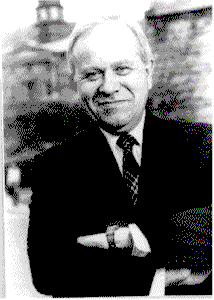- George Zames
Infobox_Scientist
name = George Zames

caption =
birth_date = birth date |1934|1|7
birth_place =Łódź ,Poland
death_date = death date and age|1997|8|10|1934|1|7
death_place =Montreal ,Canada
residence = Canada
nationality =Canadian Polish
field =Control theory
work_institution =McGill University NASA Harvard University Massachusetts Institute of Technology
alma_mater =Massachusetts Institute of Technology Imperial College McGill University
doctoral_advisor =Norbert Wiener Yuk-Wing Lee
awards = Killam PrizeIEEE Field Award for Control ScienceRufus Oldenburger Medal George Zames (
January 7 ,1934 –August 10 ,1997 ) was acontrol theorist and professor atMcGill University ,Montreal ,Quebec ,Canada . Zames is known for his fundamental contributions to the theory ofrobust control , and was credited for the development of various well-known results such assmall-gain theorem ,passivity theorem ,circle criterion in input–output form, and most famously, H-infinity methods.cite journal
author = S. Mitter
coauthors = A. Tannenbaum
year = 1998
title = The Legacy of George Zames
journal = IEEE TRANSACTIONS ON AUTOMATIC CONTROL
volume = 43
issue = 5
pages = 591
doi = 10.1109/TAC.1998.668826
url = http://www.ece.utk.edu/~djouadi/files/Zames%20Legacy.pdf
accessdate = 2008-07-05]Biography
Childhood
George Zames was born on
January 7 ,1934 inŁódź ,Poland to aJewish family. Growing up inWarsaw , Zames and his family escaped the city at the onset ofWorld War II , and moved toKobe (Japan), throughLithuania andSiberia , and finally to the Anglo-French International Settlement inShanghai . Zames indicated later that he and his family owe their lives to the transit visa provided by the Japanese Consul to Lithuania,Senpo Sugihara cite journal
author = Willems, J.C.
year = 1998
title = George Zames, 1934-1997
journal = AUTOMATICA-OXFORD-
volume = 34
pages = 285–286
url = http://www.cheric.org/research/tech/periodicals/vol_view.php?seq=25948
accessdate = 2008-07-05] . In Shanghai, Zames continued his schooling, and in 1948, the family emigrated toCanada .Education
Zames entered
McGill University at the age of 15 and recevied aB.Eng. degree inEngineering Physics . Graduating at the top of his class, Zames won anAthlone Fellowship to study inEngland , and moved to theImperial College . Graduating in two years, his advisors includedColin Cherry ,Dennis Gabor , andJ. H. Westcott . In 1956, Zames entered theMassachusetts Institute of Technology to start his doctoral studies, and in 1960 earned aSc.D. for a thesis titled "Nonlinear Operations of System Analysis." He was advised byNorbert Wiener andYuk-Wing Lee . cite journal
author = Zames, G.
year = 1960
title = Nonlinear operations of system analysis
url = http://dspace.mit.edu/handle/1721.1/4452
accessdate = 2008-07-05]Career
From 1960 to 1965, Zames held various teaching positions at MIT and
Harvard University . In 1965, Zames received aGuggenheim Fellowship and moved to the NASA Electronic Research Center (ERC), where he founded the Office of Control Theory and Applications (OCTA). In 1969, it was announced that NASA ERC was to be closed, and Zames joined the newly establishedDepartment of Transportation Research Center in 1970. In 1972, Zames spent asabbatical at theTechnion inHaifa, Israel , and in 1974, he returned to McGill University to become a professor and eventually the MacDonald Chair of Electrical Engineering until his death in 1997.Family
Zames was married to Eva, whom he met in Israel. They have two sons, Ethan and Jonathan.
Research
Zames’s research focused on imprecisely modeled systems using the input-output method, an approach that is distinct from the state space representation that dominated control theory for several decades. At the core of much of his work is the objective of "complexity reduction through organization", for which Zames explainedcite journal
author = Zames, G.
year = 1996
title = Input-output feedback stability and robustness, 1959-85
journal = Control Systems Magazine, IEEE
volume = 16
issue = 3
pages = 61–66
url = http://ieeexplore.ieee.org/xpls/abs_all.jsp?arnumber=506399
accessdate = 2008-07-05
doi = 10.1109/37.506399] :For the purposes of control design, gross qualitative properties such as robustness can be analyzed and predicted without depending on accurate models or syntheses. Mathematical analysis provides topological tools that are very well suited for this purpose, such as compactness, contraction, and fixed-point methods. Furthermore, in control design, where there is lots of model uncertainty, it is often more important to be able to gauge qualitative behavior (robustness, stability, existence of oscillations) than to compute exactly.
Legacy
The "International Journal of Robust and Nonlinear Control" published in 2000 a special issue in George Zames’s honor, including a complete list of his publications.cite journal
author = Glover, K.
coauthors = Safonov, M.G.
year = 2000
title = The Publications of George Zames
journal = Int. J. Robust Nonlinear Control
volume = 10
issue = 11-12
pages = 851–856
doi = 10.1002/1099-1239(200009/10)10:11/12<851::AID-RNC528>3.0.CO;2-3] Reviews of Zames’s life and legacy were published by S. Mitter and A. Tennenbaum, J. C. Willems, and in a volume resulting from a conference held to honor the occasion of Zames's 60th birthday. [cite book |last= Francis|first= Bruce A.|authorlink= |coauthors= |editor= B. A. Francis|others= |title= Feedback Control, Nonlinear Systems, and Complexity |origdate= |origyear= |origmonth= |url= http://www.springerlink.com/content/x520h5qhn372/?p=9aa43edee4dd41af93e83cb8a15d6a92&pi=0 |format= |accessdate=2008-07-04 |edition= |series= Lecture Notes in Control and Information Sciences|volume= 202|date= |year= 1995|month= February|publisher= Springer |location= Berlin|language= |isbn= |oclc= |doi= |id= |pages= |chapter= Biographical Sketch of George Zames|chapterurl= |quote= ]References
External links
* [http://www.autsubmit.com/editorials/ed34_3.html Obituary]
* [http://www.genealogy.math.ndsu.nodak.edu/id.php?id=99791 Mathematics Genealogy Project profile]
Wikimedia Foundation. 2010.
